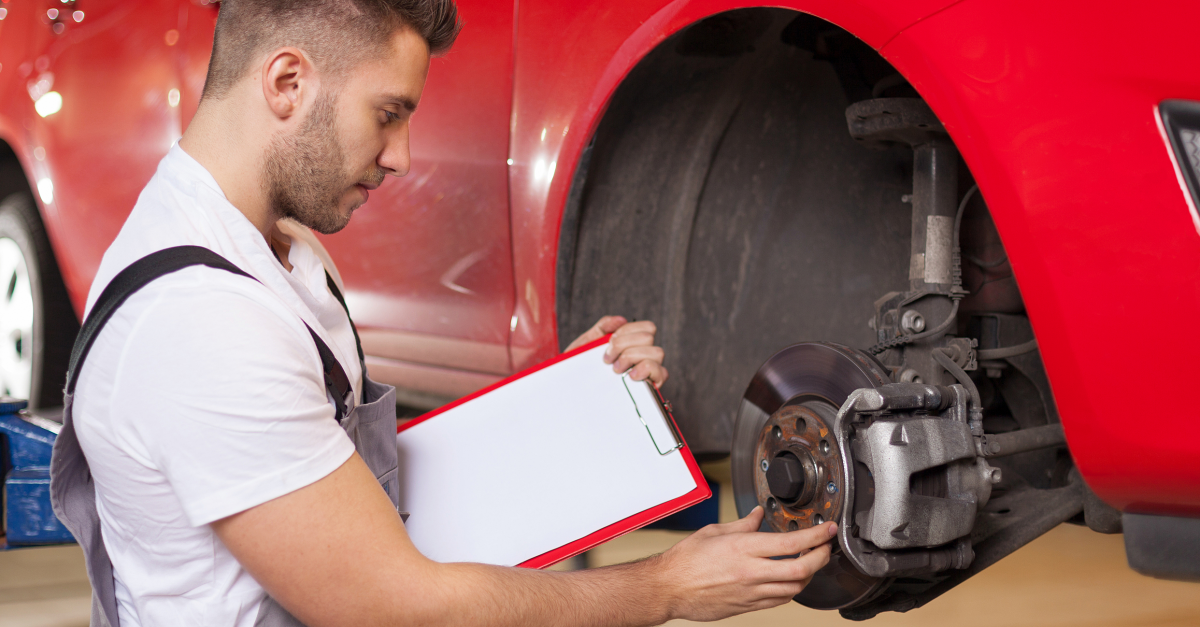
Modern brake systems give us thousands of miles of worry-free driving. But that peace of mind sometimes breeds complacency that lasts until the brakes have almost eroded. That’s why it’s vital to schedule an inspection ahead of that summer road trip.
“Drivers should always get their brakes inspected before going on vacation,” said Tony Molla, vice president of the Automotive Service Association, a nonprofit trade group focused on vehicle care. “You don’t want to get stranded in a remote area or triple-digit heat."
What are the major components that drivers should get inspected before heading out on their next major road adventure?
Rotors: As the name implies, these metallic discs rotate as the wheels are in motion. Rotors sit behind the wheel assembly and can sometimes be seen through the vehicle’s rims. Pressing the brake pedal activates a clamp on either side of the spinning disc.
Stopping requires friction and braking creates searing heat that eventually scars rotors. While they can be resurfaced, rotors eventually reach a point where replacement is the only option.
Rotors should be checked during a tire rotation or multipoint inspection.
Brake pads: Made from an assortment of metals, brake pads pinch the rotor whenever the brake pedal is pushed and typically last between 20,000 and 40,000 miles. Brake pads are designed to alert drivers when they’re wearing thin. A small metal piece pings or “chirps” when it makes contact against the brake disc. Dismiss that squealing and you could do serious damage to your rotors. Paying attention to and acting on cues like these help keep routine services from mutating into major repairs.
Brake fluid: Stopping a car depends on hydraulics, and brake fluid is literally the system’s lifeblood. Pushing the pedal forces fluid through the lines, causing components to expand against the wheels and stop the vehicle.
How often your brake fluid needs to be replaced depends on a variety of factors, such as your driving habits and environmental factors like heat and humidity. Most vehicles don’t have gauges or sensors that track brake fluid. Have your fluid inspected by a certified auto mechanic.
“Brake fluid is the most important fluid in a car and probably the most ignored,” Molla said.
Calipers: Part of a disc brake system, calipers push the brake pads against the rotors when the brake pedal is pushed. This resulting friction between the pads and rotors slows--and ultimately stops--the vehicle.
Waiting too long to replace worn brake rotors puts extra stress on the calipers. The calipers will rub against uneven rotors if the components aren’t parallel to one another, creating a vibration that can be felt in the steering wheel during stops, said Bill Siuru, an automotive writer who holds a PhD in mechanical engineering.
“The pulsation can be merely annoying during normal stops, but it’s dangerous during a panic stop from high speeds, especially if the warping is severe,” he said.
Drums: These bowl-shaped components use springs to expand the brake pads against the inside of the drum. This style of brakes is typically found on the rear of trucks or sedans. While it produces brake dust, the majority of it hides behind the covering, which means less gunk on your rims.
The brake drum is typically made of cast iron that conducts heat and is resistant to wear. So why are drum brakes usually found on the rear wheels?
“Drum brakes are cheaper and take less hydraulic force to activate. When you stop your car most of the braking is done by the front brakes because of weight transfer--why you feel pressed towards the front when you hit the brakes,” said Nathan Kaemingk, a technical specialist for Cummins, Inc. “[Drum brakes] are more susceptible to warping and brake fade. They're worse at cooling, and more likely to need cleaning and adjustment for optimal operation than disc brakes because a lot of the dust from brake shoes stays inside the drum.”
Copyright © 2024 by Sensible Driver. All rights reserved.



